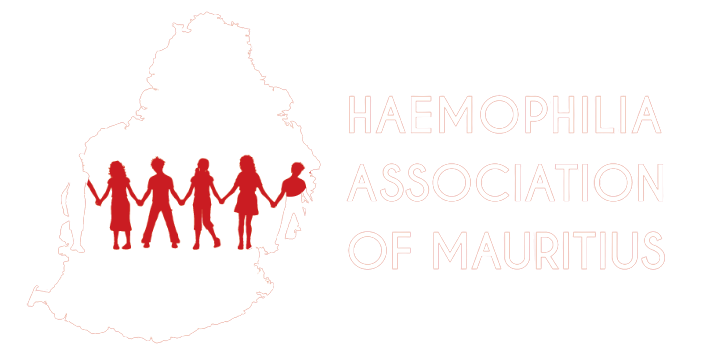

HOW DO YOU GET HAEMOPHILIA?
People are born with haemophilia. They cannot catch it from someone like a cold.
Haemophilia is usually inherited, meaning that it is passed on through a parent’s genes. Genes carry messages about the way the body’s cells will develop as a baby grows into an adult. They determine a person’s hair and eye colour, for example.
Sometimes haemophilia can occur when there is no family history of it. This is called sporadic hemophilia. About 30% of people with haemophilia did not get it through their parent’s genes. It was caused by a change in the person’s own genes.
How is haemophilia inherited?
The haemophilia gene is passed down from parent to a child. The genes for haemophilia A and B are on the X chromosome. For this reason, haemophilia is called an X-linked (or sex-linked) disorder.
The figure below explains how the haemophilia gene is inherited. When the father has haemophilia but the mother does not, none of the sons will have haemophilia. All the daughters will carry the haemophilia gene.
Women who have the haemophilia gene are called carriers. They sometimes show signs of haemophilia, and they can pass it on to their children. For each child, there is a 50% chance that a son will have haemophilia and a 50% chance that a daughter will carry the gene.
Women can only have haemophilia if their father has haemophilia and their mother is a carrier. This is very uncommon.
Acquired haemophilia
In rare cases, a person can develop haemophilia later in life. The majority of cases involve middle-aged or elderly people, or young women who have recently given birth or are in the later stages of pregnancy. This condition often resolves with appropriate treatment.



